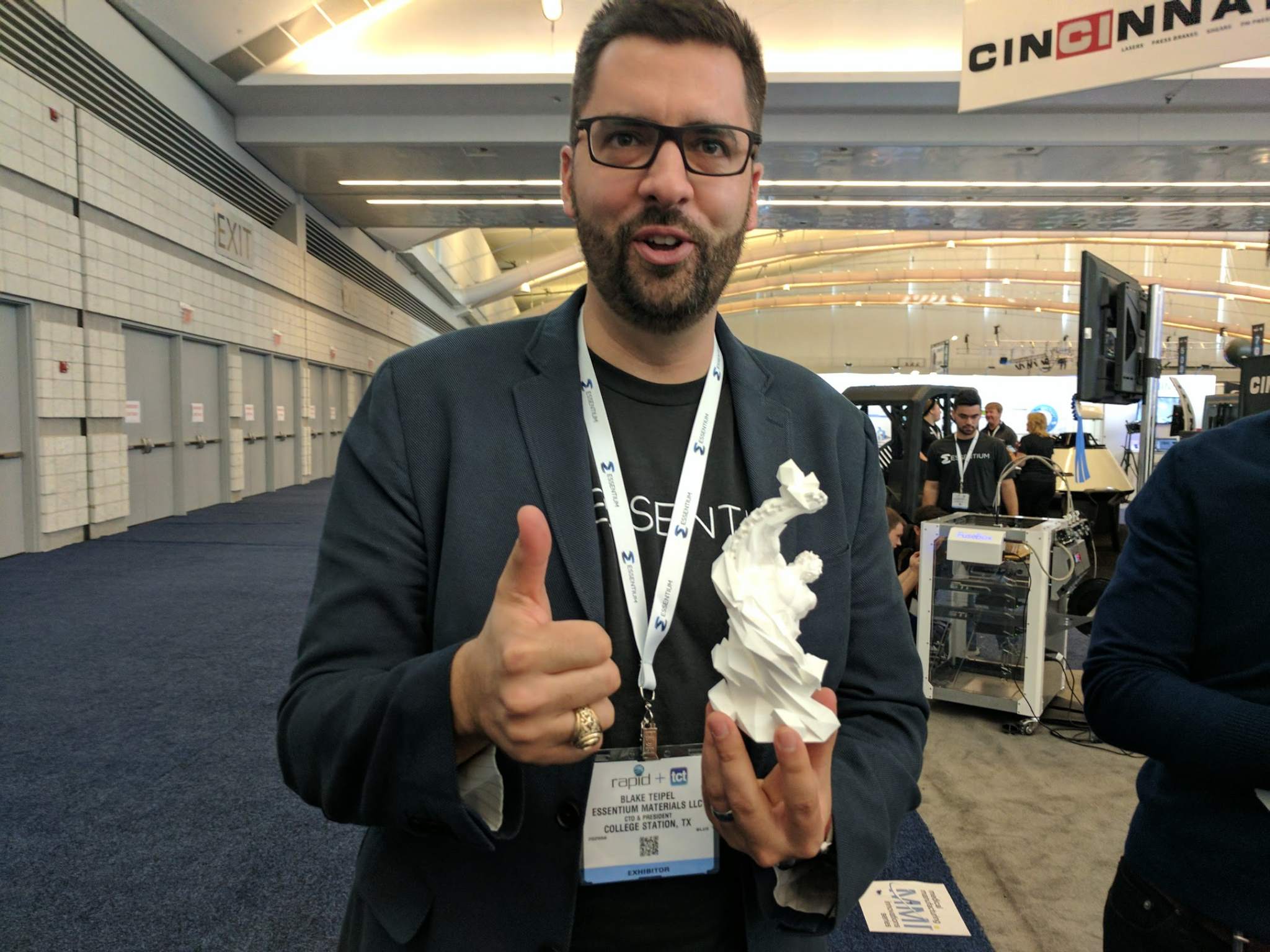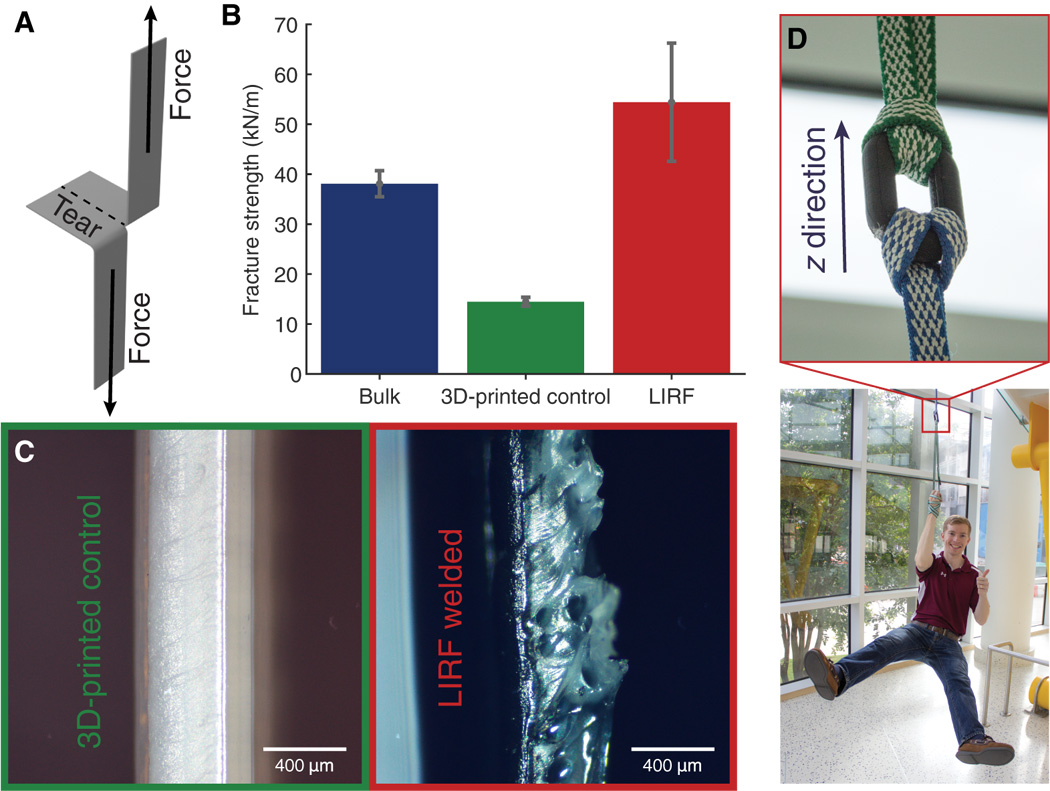Researchers from Texas A&M University and Texas Tech University have collaborated with 3D printing company Essentium Materials. The study shows how an FDM 3D printer coupled with an electric welding processes and carbon nanotubes (CNTs) can boost a 3D prints strength.
The aim of the research is to improve the z-axis strength of 3D printed parts. Success would mean 3D printed parts with similar strength to those produced with injection molding.
By microwaving the 3D printed CNT infused thermoplastic, the group of researchers were able to improve weld fracture strength by 275%.

FlashFuse
Working on the project was Founder and CTO of Essentium, Blake Teipel, the company has developed a 3D printer add-on called the ‘FuseBox.’ The device uses an electric welding technique that the company call ‘FlashFuse’.
The Fusebox will be available later this year and the Texan company are also working in partnership with BASF, the largest chemical producers in the world.
Gif shows the FuseBox 3D printing process. Images via Essentium Materials.
Research process
Using a Stacker 500 desktop 3D printer and filament infused with carbon nanotubes (CNTs), the research validates the process of bonding deposited layers with microwave irradiation.
Thermoplastic filament is coated in a bath of carbon nanotube ink. Once dried, the material is extruded to create layers with an exterior that is sensitive to radio frequency. In this research, an engineering grade PLA filament was used to test the process.
The 3D printed structures were subjected to 60 seconds of 160°C electromagnetic waves. As a result the layers fused together to form stronger bonds and increased strength in the build direction (z-axis).

Superior strength
Documenting the results of the project, the researchers found they were able to improve strength of 3D printed parts. The paper explains a number of tests were performed to understand the results of the process, including trouser tear tests which explored the fracture strength of the welded parts. In comparison to the control 3D printed structure, the researchers found the welded objects were stronger in interlayer bonding along the z-axis.

Future of flash fuse
The research team have further studies planned, “we anticipate that this process can be extended to additive manufacturing of other thermoplastics.”
The paper, ‘Welding of 3D-printed carbon nanotube–polymer composites by locally induced microwave heating’ is published online in Science Advances. The full list of authors includes Texas A&M University researchers: Charles B. Sweeney, Blake A. Lackey, Martin J. Pospisil, Thomas C. Achee, Victoria K. Hicks, Aaron G. Moran, and Micah J. Green. In addition to Mohammad A. Saed of Texas Tech University and Blake Teipel of Essentium Materials LLC.
For all the latest news on 3D printing research, subscribe to the most widely read newsletter in the 3D printing industry, follow us on twitter and like us on Facebook.
Featured image shows figure 1 from the paper which outlines the problem of weak z strength in 3D printed parts. Image via Science Advances.



